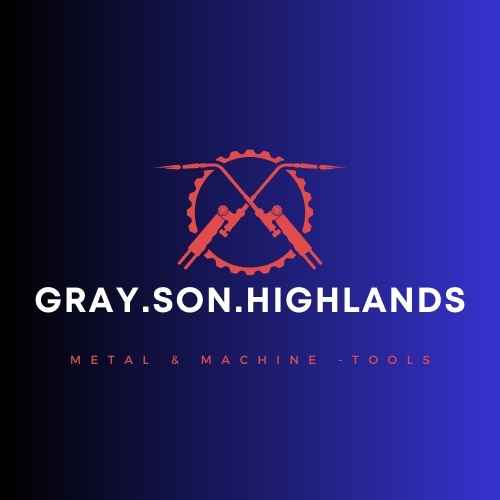3 Axis 3 axis machining suggests that the work surface remains in the very same placement while the reducing tool runs along the XYZ airplane to cut away product. This is suitable for components that don't call for a great deal of deepness and detailing. 3 axis machining is most typically used to create mechanical parts as well as is finest fit for: Automatic/interactive procedure Milling ports Boring holes Reducing sharp sides 4 Axis 4 axis machining indicates that a work surface is refined in the same method it would be with a 3 axis equipment, however has an additional rotary activity around the X axis, which is named the A axis.
Basic machines relocate along a couple of axis, however advanced equipments, as well as those developing 3D items, will certainly move along three axis. The maker's devices comply with thousands of co-ordinates, reducing and also shaping as they relocate. What is CNC process? CNC (computer system numerical control) machining is a process in manufacturing where configured computer system software program guides the activities of plant machinery and tools.
In order to further grab the basics of CNC machining, it is vital to recognize just how CNC machining works. From the meaning, CNC machining is a subtractive and computerized procedure.
Use CNC machining when parts with the tightest tolerances are required. CNC machining is among two manner ins which engineers, machinists, or makers can create a physical part from a computer design data, with the other being 3D printing, understood as additive manufacturing. All pictures and videos thanks to the imaginative commons or made use of based on fair usage legislations.
Not known Details About Cnc Lathe
In the very first circumstances, the measurements of the part to be made are defined by CAD (computer-aided style). The CNC machining is a subtractive production procedure that runs with computerized controls. It assists in manipulating the cutting devices to reshape the stock material such as timber, plastic, glass, foam, and so on.
The contemporary CNC devices are built with the current technology as well as are totally automated. Let's begin with the fundamentals: CNC stands for Computer system Numerical Control. This is one approach of automating the control of maker tools. So you can make use of a CNC equipment to carry out specific cuts and also other machining jobs that would be difficult to do with the human hand.
What is a CNC Router and also Exactly How Does it Work? What Does a CNC Operator Do? The necessary function of a CNC operator is to set up and also run CNC devices and devices. On any kind of given day, a driver may dump basic materials, prepare an examination run to make sure an equipment is working appropriately and evaluate as well as measure completed products to ensure they fulfill needs.
When it boils down to a CNC mill vs. lathe, milling, with its revolving cutting tools, works much better for even more facility parts. Nevertheless, turrets, with revolving work surfaces as well as fixed cutting devices, work best for faster, extra exact production of round parts. Note: Some CNC machining operation details provided thanks to Steel Craft.
Some Known Details About Cnc Plasma Cutter

This enables less stress on the part being made. Swiss machining is best for small components in huge quantities, like watch screws, as well as for applications with critical straightness or concentricity tolerances. You can figure out more regarding this topic in our overview on exactly how swiss screw machines function.
By including a tilting, revolving job holding fixture (or trunnion) to the job table, the mill becomes what is called a 3 +2, or an indexed or positional, equipment, making it possible for the milling cutter to come close to five out of 6 sides of a prismatic workpiece at 90 without a driver having to reset the work surface.
Adding servomotors to the extra axes, plus the electronic control for them the CNC part would make it one. Such a maker- which is capable of full synchronised contouring- is in some cases called a "constant" or "synchronised" 5-axis CNC mill. The two added axes can also be included at the machining head, or divided one axis on the table as well as one on the head.

When it comes down to a CNC mill vs. turret, milling, with its revolving reducing tools, functions better for even more facility components. Nonetheless, lathes, with turning work surfaces and stationary cutting tools, job best for faster, more accurate development of round components. Note: Some CNC machining procedure info gave thanks to Steel Craft.
Some Ideas on Cnc Laser You Need To Know
This enables much less anxiety on the part being made. Swiss machining is best for little components in big amounts, like watch screws, along with for applications with important straightness or concentricity tolerances. You can find out even more regarding this subject in our overview on exactly how swiss screw machines function.
By adding a tilting, revolving work holding component (or trunnion) to the job table, the mill becomes what is called a 3 +2, or an indexed or positional, machine, allowing the milling cutter to approach 5 out of six sides of a prismatic workpiece at 90 without an operator having to reset the workpiece.
Adding servomotors to the added axes, plus the digital control for them the CNC component would make it one. Such an equipment- which can full synchronised contouring- is occasionally called a "continual" or "simultaneous" 5-axis CNC mill. The 2 added axes can likewise be included at the machining head, or divided one axis on the table as well as one on the head.

